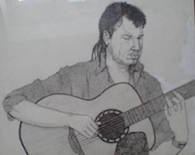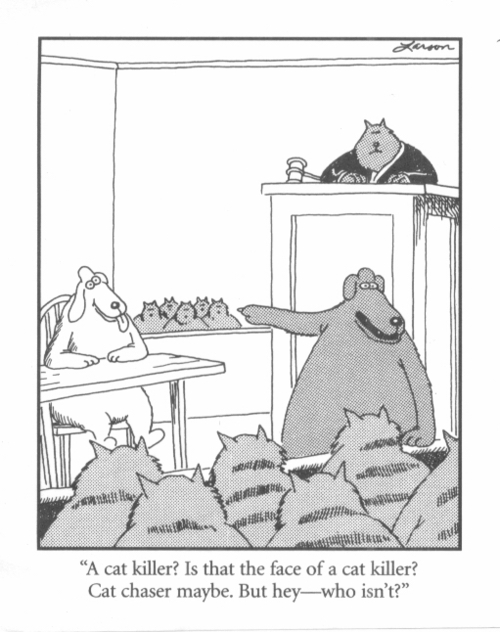Welcome to one of the most active flamenco sites on the Internet. Guests can read most posts but if you want to participate click here to register.
This site is dedicated to the memory of Paco de Lucía, Ron Mitchell, Guy Williams, Linda Elvira, Philip John Lee, Craig Eros, Ben Woods, David Serva and Tom Blackshear who went ahead of us.
We receive 12,200 visitors a month from 200 countries and 1.7 million page impressions a year. To advertise on this site please contact us.
|

|
|
Finishing: what would happen if . . .
|
You are logged in as Guest
|
|
Users viewing this topic: none
|
|
Login  | |
|

   
estebanana
Posts: 9353
Joined: Oct. 16 2009

|
 RE: Finishing: what would happen if ... (in reply to a_arnold) RE: Finishing: what would happen if ... (in reply to a_arnold)
|
|
|
First I would ask the question backwards: Does putting finish on a guitar top keep the top from cold bending under tension over time into another position?
The answer is no. Guitar tops move even is finish is applied when they are in full arch radiating out from the bridge before being strung.
Second not all guitars are made to deform or need to deform to sound good.
Third the deforming works a couple of ways, often it flattens out in front of the bridge and can even become a concavity, and behind the bridge is pulls up and arches. So there are a lot of parts at play.
The flamenco sound is in part made because the guitar has a lot of open swing across the grain through the bridge area. The tone generator guys call it the cross di pole mode. Flamenco guitar makers have always known that this area is important. The other thing, which Ethan Deutch touched on, is that flamenco sound also comes from leaving these areas a bit loose and flexible. Flamenco guitars are very often not as stiff in the ribs or around the rim of the top. Part of the voice comes from not maximizing some of the areas where in a classical with lots of sustain or clear bell like tone you might want to stiffen.
I think of flamenco guitars as being different from classical guitars in that you make this really tight stiff system of braces and rib support and then you break it down a bit so it absorbs certain parts of the string energy and this gets expressed by ribs and top and back as a flamenco voice, because it's not hard and stiffly reactive. Thats not to say flamencos are mushy or not built well, it just means they are left more open and flexible in certain areas.
So there is a fine line between how you may want a classical guitar to be stiff and rigid to maximize energy and not damp it and a flamenco where the right amount of damping left in will make a great guitar. Very fine line. Then again you may want those more gutteral growly sounds in a classical too, so you leave it more flexible in certain areas and in that cross di pole area you have something to play with.
That said, there have been makers building over the last 80- 90 years who played with these ideas of top deformation. Those makers did it structurally by shaping braces with concave surfaces built in. When you glue the brace to the skin of the top, it pulls the top down. One example out of others to many to mention; I've seen a picture of a Hauser I where he did that just behind the sound hole. He made the brace 2mm concave at the sound hole and then the bridge is gets a bit of arch. Essentially he made a potato chip of the top. There is a builder in Australia who makes great guitars named Jim Redgate and he has a similar idea going that is called The Wave, the top basically gets the potato chip treatment via braces and ribs being convex and concave in certain places. He is working to lessen areas that rob energy from the top. He said it that way. He's not trying to gain energy, he's trying to get things out of the way that sap the existing energy.
Lutes and ouds have always had always had intentionally 'S' curved faces. This is do to the strings pulling up the bridge and the thin laterally braced tops dipping down before the bridge and up again to the sound hole. But the instruments don't rely upon finishes to bring the top into an altered mode of arch or flatness, it's built into the wood structure by compensation the strings pulling the top out of position, over time. In the case of the oud, which is much like a flamenco guitar in the way it needs to be left a bit flexible to function, there have been modern makers who have beefed up the braces and added a trapeze bridge the oud. There was a famous Iraqi oudi who asked for his oud to be set up that way. It enables the top to withstand more tension and maximize the amount of energy being fed into the top through the bridge. The result is it makes the oud sound more nasal and not as warm and funky, it sounds like a sick oud in many oudi's opinions.
The oud is a thousand years old, at least. So there is nothing new under the Sun.
But there is always a new way to skin a cat, if you like skinning cats. If I were trying to make a cats fur lock into place I would spray lacquer on the cat.
However the stiff furred cat will not be able to chase mice. In the end I would caution not reinventing the mousetrap in order to skin the cat.
Buttered cats are more fun, although harder to catch.
I hope this makes it all clear for you now to reach your goal, no punt intended.
* No cats, lutes, ouds or flamenco guitars were harmed in writing this opinion*
_____________________________
https://www.stephenfaulkguitars.com
|
|
|
|
REPORT THIS POST AS INAPPROPRIATE |
Date Dec. 29 2012 4:58:21
 |
|
 New Messages New Messages |
 No New Messages No New Messages |
 Hot Topic w/ New Messages Hot Topic w/ New Messages |
 Hot Topic w/o New Messages Hot Topic w/o New Messages |
 Locked w/ New Messages Locked w/ New Messages |
 Locked w/o New Messages Locked w/o New Messages |
|
 Post New Thread
Post New Thread
 Reply to Message
Reply to Message
 Post New Poll
Post New Poll
 Submit Vote
Submit Vote
 Delete My Own Post
Delete My Own Post
 Delete My Own Thread
Delete My Own Thread
 Rate Posts
Rate Posts
|
|
|
Forum Software powered by ASP Playground Advanced Edition 2.0.5
Copyright © 2000 - 2003 ASPPlayground.NET |
0.078125 secs.
|


 Printable Version
Printable Version












 New Messages
New Messages No New Messages
No New Messages Hot Topic w/ New Messages
Hot Topic w/ New Messages Hot Topic w/o New Messages
Hot Topic w/o New Messages Locked w/ New Messages
Locked w/ New Messages Locked w/o New Messages
Locked w/o New Messages Post New Thread
Post New Thread